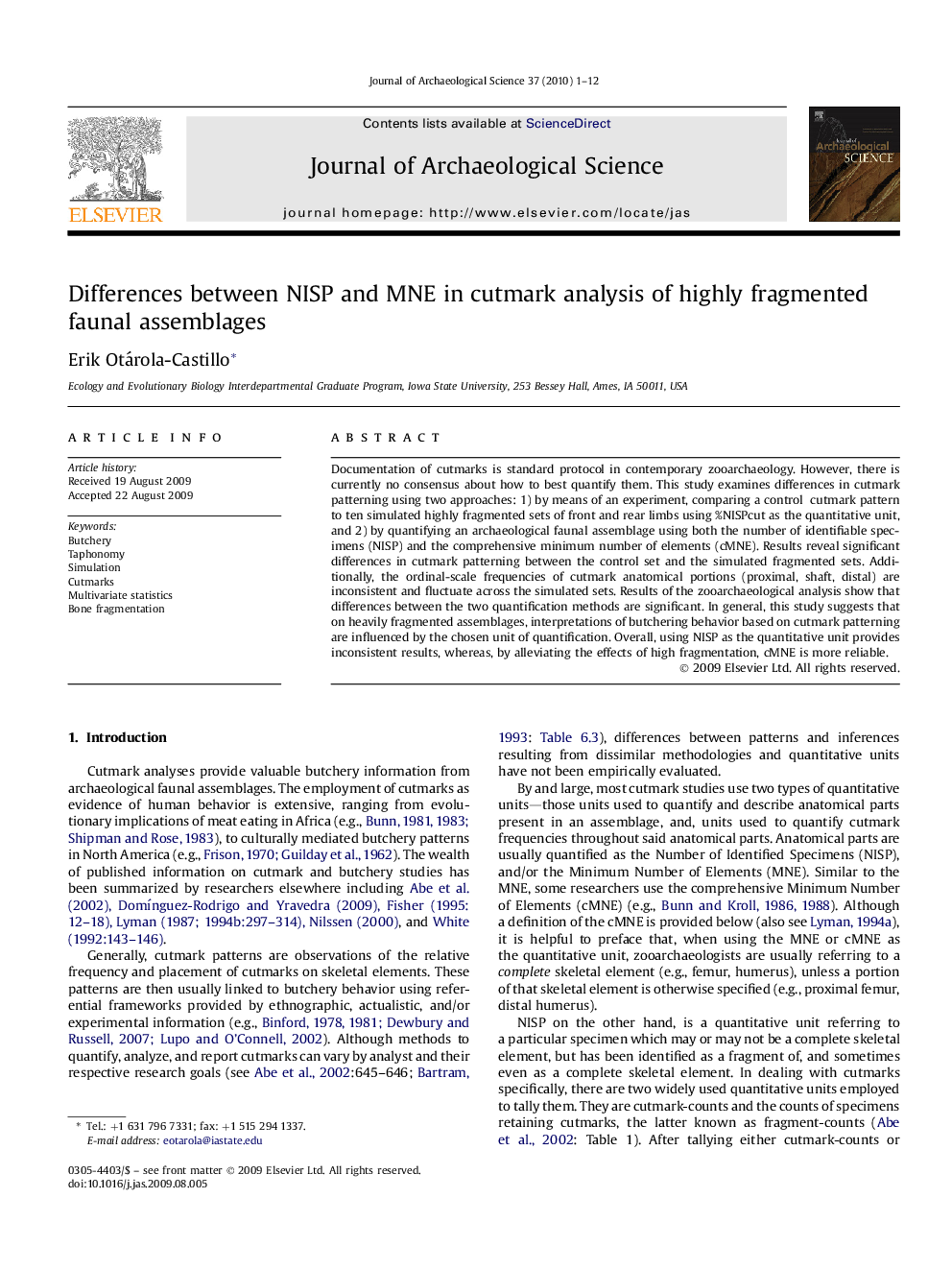| Article ID | Journal | Published Year | Pages | File Type |
|---|---|---|---|---|
| 1036769 | Journal of Archaeological Science | 2010 | 12 Pages |
Documentation of cutmarks is standard protocol in contemporary zooarchaeology. However, there is currently no consensus about how to best quantify them. This study examines differences in cutmark patterning using two approaches: 1) by means of an experiment, comparing a control cutmark pattern to ten simulated highly fragmented sets of front and rear limbs using %NISPcut as the quantitative unit, and 2) by quantifying an archaeological faunal assemblage using both the number of identifiable specimens (NISP) and the comprehensive minimum number of elements (cMNE). Results reveal significant differences in cutmark patterning between the control set and the simulated fragmented sets. Additionally, the ordinal-scale frequencies of cutmark anatomical portions (proximal, shaft, distal) are inconsistent and fluctuate across the simulated sets. Results of the zooarchaeological analysis show that differences between the two quantification methods are significant. In general, this study suggests that on heavily fragmented assemblages, interpretations of butchering behavior based on cutmark patterning are influenced by the chosen unit of quantification. Overall, using NISP as the quantitative unit provides inconsistent results, whereas, by alleviating the effects of high fragmentation, cMNE is more reliable.
